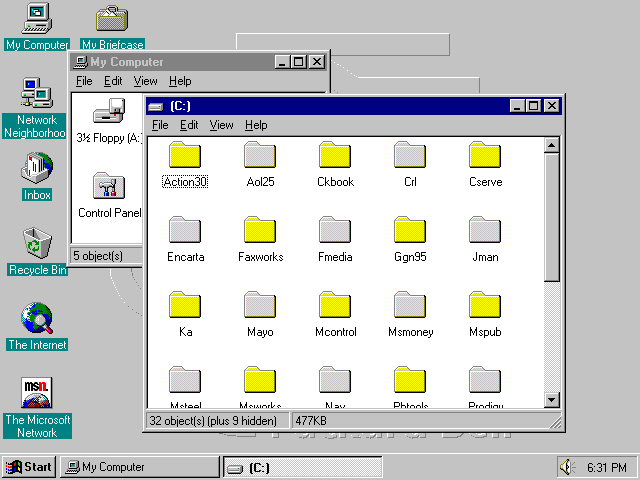Microsoft Windows 95
Windows 95 (codenamed Chicago) is a consumer-oriented graphical user interface-based operating system. It was released on August 24, 1995 by Microsoft,[2][3] and was a significant progression from the company's previous Windows products. During development, it was referred to as Windows 4.0 or by the internal codename Chicago.
Windows 95 integrated Microsoft's formerly separate MS-DOS and Windows products. It featured significant improvements over its predecessor, Windows 3.1, most notably in the graphical user interface (GUI) and in its relatively simplified "plug-n-play" features. There were also major changes made at lower levels of the operating system, such as moving from a mainly 16-bit architecture to a pre-emptively multitasked 32-bit architecture.
Accompanied by an extensive marketing campaign,[4] Windows 95 was a major success in the marketplace at launch and shortly became the most popular desktop operating system. It also introduced numerous functions and features that were featured in later Windows versions, such as the taskbar, the 'Start' button, and the way the user navigates. It was also suggested that Windows 95 had an effect of driving other major players (including OS/2) out of business, something which would later be used in court against Microsoft.
Some three years after its introduction, Windows 95 was succeeded by Windows 98. Support for Windows 95 ended on December 31, 2001.
